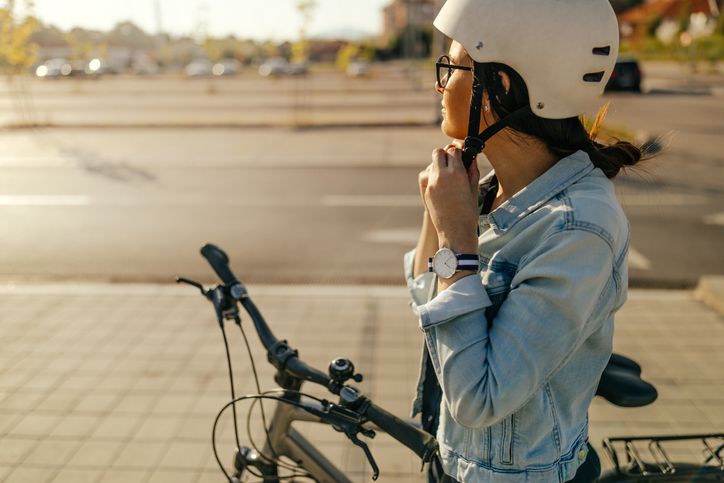Emergency and Trauma Care
Want to learn more about this at Kettering Health?
With limited options for entertainment and the need to social distance, you may have found outdoor activities such as biking make their way into your daily routine. Luckily for its residents, Dayton is home to the country’s largest network of paved trails.
The spacious Miami Valley Trail Network is a great place to get exercise while keeping your distance from others. Though the risk in enjoying this activity is relatively low as far as the pandemic goes, it’s still crucial riders take note of other safety measures.
“Each year we see head injuries, collar bone and wrist fractures, and major scrapes due to accidents on pavement,” says Dr. Nancy Pook, medical director of the Emergency Department at Kettering Health Main Campus. “Risk of injury increases at an accelerated speed, on inclines, and near traffic, so it’s important to know how to stay safe while having fun.”
Before you head out, take steps to reduce your risk of injury. Follow these tips to stay out of harm’s way and avoid having an emergency:
Wear a properly fitted helmet
Helmets reduce the risk of severe and long-term head and brain injuries in the event of a crash or accident. Always wear a properly fitted helmet—even if you only plan on riding for a few minutes or a short distance.
Helmets for biking, in-line skating, and skateboarding are all made differently, so get the right one for your activity.
Helmets should be age-appropriate, well-maintained, and worn consistently and correctly. Most helmets are designed to withstand minor dumps or scrapes, but once it’s been through a hard hit or becomes cracked, it’s time for a new one.
Look for one approved by the U.S. Consumer Product Safety Commission (CPSC).
Get the right fit for your equipment
Make sure equipment fits and is the right size for you or your kids.
- Sit on the seat of your bike and grasp the handlebars. If the balls of both feet aren’t touching the ground, the bike is too big.
- In-line skates should b should fit snuggly without reducing circulation or cramping the toes. Blades that don’t fit right can lead to sore feet, blistering, and unstable blading—especially if they’re too big.
- Skateboards come in various widths and lengths, so get a board that’s right for your size and experience level.
Check that everything works
Inspect your equipment before every ride.
- Check your skateboard for loose, cracked, or broken parts; sharp edges; or a slippery surface. All are signs that your board needs a repair.
- Check that tires are properly inflated and that the brakes and gears work on your bicycle. Remember, smaller hands and muscles may not have the strength for hand brakes, so foot brakes are a must-have for young kids.
- If you ride on the road, your bike should have a headlight and taillight that are visible from 500 feet away. If you don’t have lights, get reflectors that are visible from the front, rear, and sides.
- In-line skates should be checked to ensure the wheels and brakes aren’t worn down and that no debris is blocking the wheels. Wheels should roll smoothly, without catching, and should not have cracks.
Always dress for success
- Proper athletic shoes are important, especially for skateboarding. Never wear flip-flops while riding a bike or skateboarding.
- Wear brightly colored, fluorescent, or reflective clothes that motorists can easily spot if you plan to ride your bike or in-line skate near traffic. In addition to a helmet, “wrist, elbow, and knee pads are essential for activities like skateboarding and rollerblading,” says Dr. Pook.










